Homemade Cashew Milk
March 6, 2010
This homemade cashew milk is super easy, rich and creamy, loaded with nutrients, and really delicious. And, cashew milk doesn’t require any straining!

Homemade Cashew Milk
This homemade cashew milk is super easy, rich and creamy, loaded with nutrients, and really delicious. And, cashew milk doesn't require any straining!
Prep Time 10 minutes
Total Time 10 minutes
Servings 3 cups
Ingredients
unsweetened cashew milk:
- 1 cup raw cashews, soaked for 2 hours and drained
- 3 cups filtered water
- Pinch of Celtic sea salt
sweetened milk (unsweetened milk, plus below):
- 1 teaspoon natural vanilla extract
- 3 to 6 pitted dates (or 2 to 3 tablespoons pure maple syrup or other sweetener)
- 1 tablespoon sunflower lecithin (optional)
chocolate milk (sweetened milk, plus below):
- 2 tablespoons cacao powder, plus more to taste
cinnamon milk (sweetened milk, plus below):
- 1 teaspoon ground cinnamon, plus more to taste
strawberry milk (sweetened milk, plus below):
- 3 cups fresh strawberries, plus more to taste
Instructions
-
To soak the cashews, place the nuts in a glass or ceramic bowl or large glass jar, and cover with filtered water. Add 1 teaspoon Celtic sea salt and splash of fresh lemon juice or apple cider vinegar, cover the container with a breathable kitchen towel, and allow to soak at room temperature for 2 hours. (For more information on soaking read here.)
-
Drain, and discard the soaking liquid (do not use this to make the milk). Rinse the cashews several times to remove the anti-nutrients and enzyme inhibitors.
-
Throw the rinsed cashews, water, and salt in your blender, with any additions (if using), and blast on high for about 60 seconds, until smooth and creamy. (There is no need to strain.)
-
Store the milk in a sealed container in the fridge. Activated cashew milk (made with soaked cashews) will keep for 2 to 3 days in a very cold fridge. Unsoaked cashew milk will keep for about 5 days.
Recipe Notes
Learn how to make nut milks and get the plant-based milking cheat sheet.
Photo by Trent Lanz; styling by Alicia Buszczak





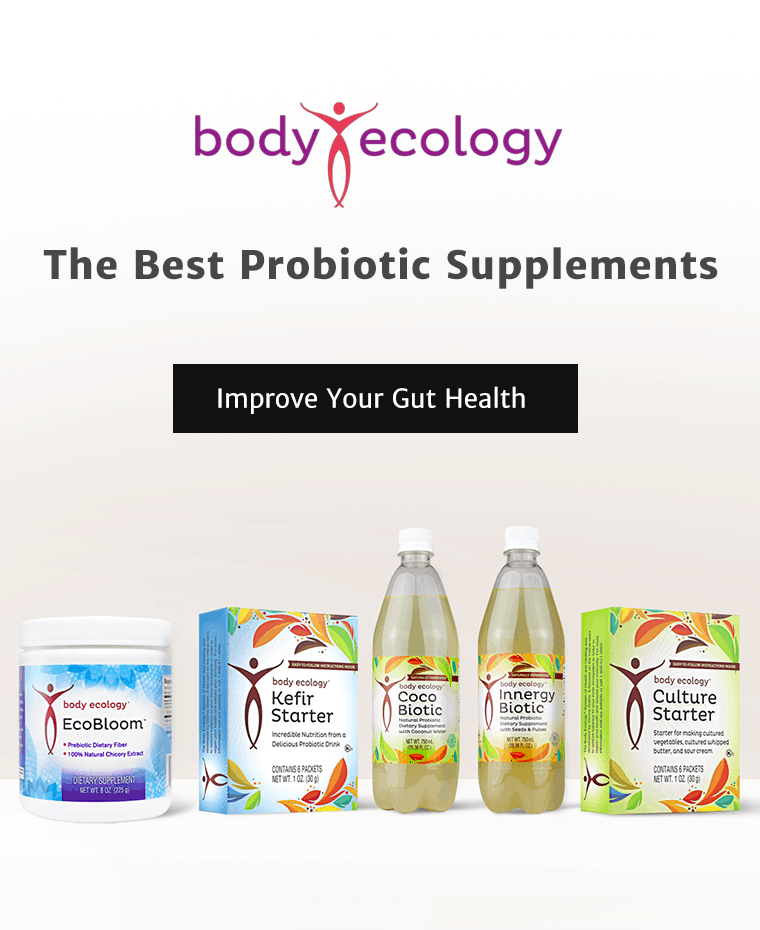
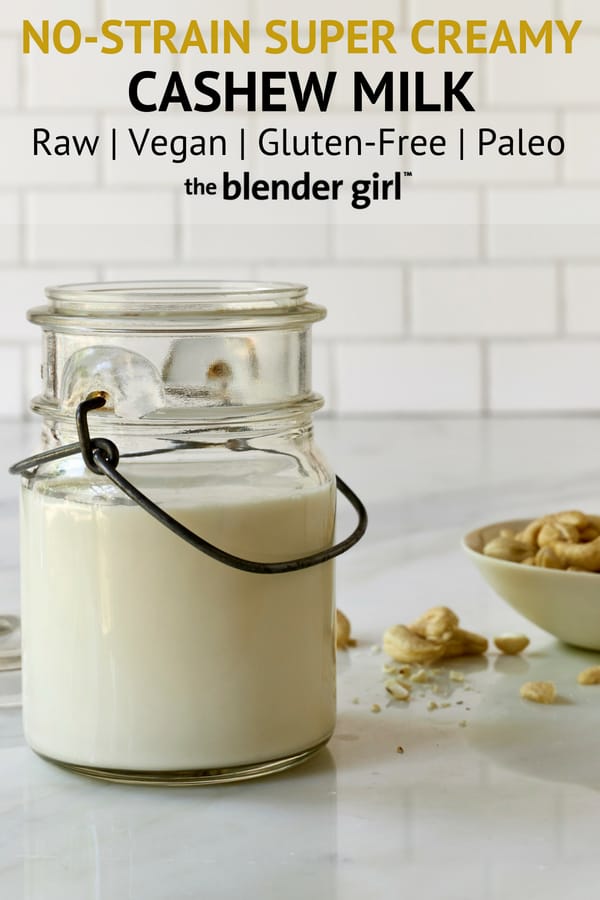
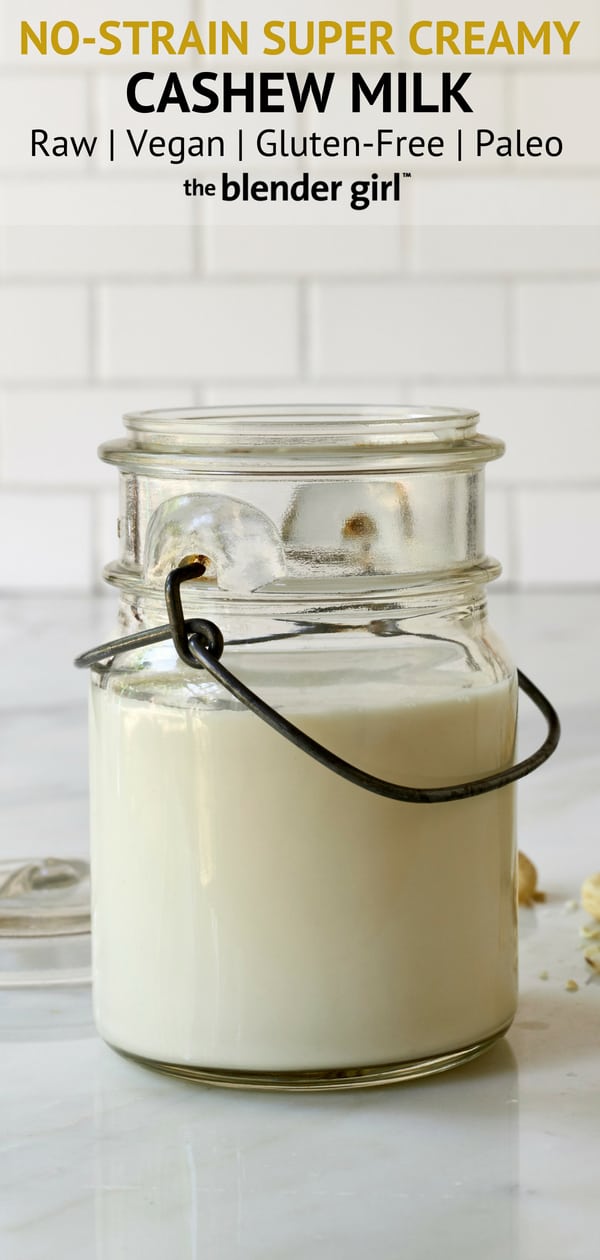
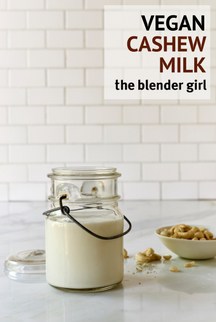
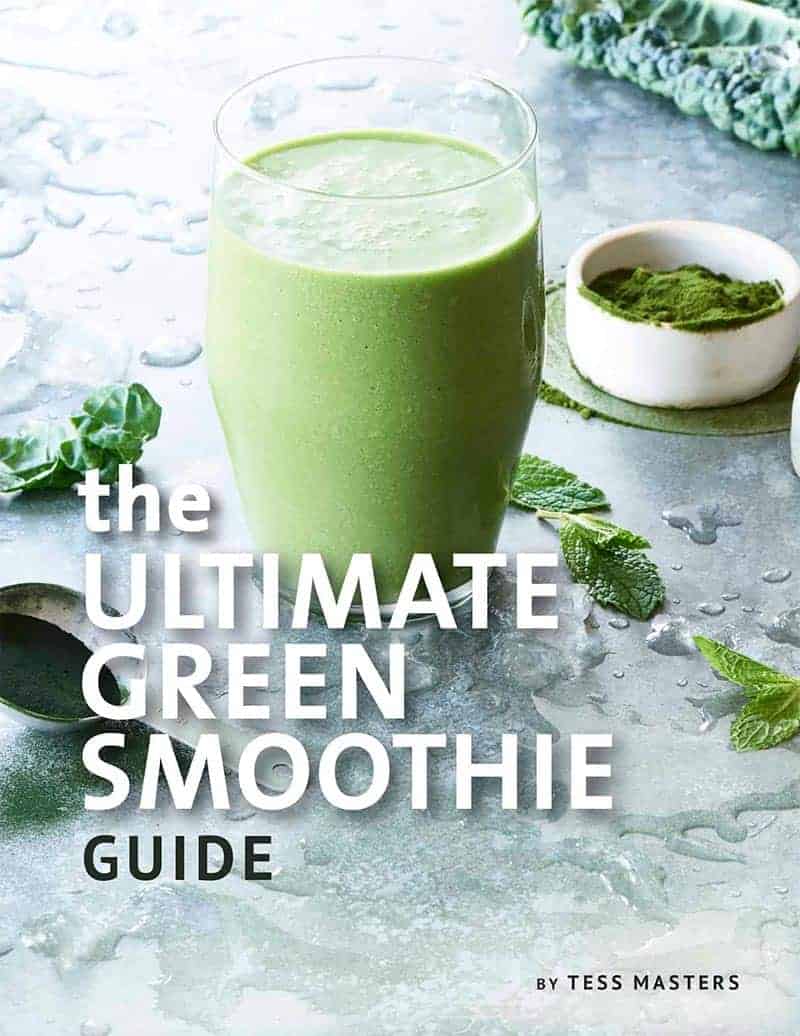
Comments 72
Ah so this is how you make it! SO easy…thanks!
Great! So glad you are enjoying it.
Hi there. How long can one keep the cashewnut milk, before it goes of? And should it be kept in the fridge?
Thanks!
Arnoud
Hey Arnoud,
This fresh raw cashew milk will keep in the fridge for about 3 days.
Because cashew milk is so quick and easy to make and you don’t need to strain it, I tend to make small batches as I need them so it is as fresh as possible.
The milk will separate a little in the fridge. Just give it a stir before using it 🙂
I keep mine much longer than that. Is that bad?
No, if it’s still good and not fermented. If you don’t soak your cashews before making the milk it may last 5 days.
hi, I have cashew nut milk in the fridge that I forgot about and now has gone thick and a little sour can I make it into a no bake cheese cake with agar agar..it must have been there about 7days
thanks
Jacqui
Hey Jacqui,
Sorry for my delay in responding to this.
I was travelling 🙂
I wouldn’t use that sour cashew milk for making cheesecake.
You have probably figured something out by now! Apologies for that.
I am so going to try this. I just ordered a ton of cashews and almonds from nuts.com . They are suppose to be really fresh and truly raw. I will see when they come in! I love home made almond milk (even though toddler prefers store bought) I just hate the whole straining process! Now…I never even thought of cashews! My most favorite cooking nut! I love that I will not have to strain!!!! I will try choco milk and maybe win kids over! I am loving your site btw!
Thankyou!
I am so glad we are connected here Katie!
You can milk out of most nuts and seeds. It is wonderful that you don’t have to strain the cashew and macadamia nut milk. Try Brazil nut milk. That is awesome too 🙂
Ever since I got my vitamix, this has become my favorite coffee creamer. So rich and creamy and delicious!
Oh. I love that! Thanks for sharing Dawn!
I LOVE that. It is SO easy isn’t it?!
Pleasure. Enjoy 🙂
Hi your comment about the fungi in cashew nuts, has really put me off them. I always thought they were healthy till now?
Yeah…..It’s a bummer. Cashews are not the healthiest nut. I use them for desserts and treat smoothies, and consume them in moderation. For everyday milk try almond milk, hemp milk, and macadamia milk, which are all full of protein and alkaline.
Best Recipe. I loved it. Thanks for sharing the wonderful recipe with us.
Awesome. Thanks!
Is there a reason you can’t or shouldn’t use unsalted, roasted cashews to make cashew milk?
You can make roasted cashew milk. It’s just very rich. It’s also healthier to eat nuts raw. Roasting them destroys their delicate oils and makes them carcinogenic.
In the note about not consuming a lot of raw cashews — I just discovered cashew milk due to Silk making some and I saw it in the grocery store. I also just got a Ninja blender and discovered how much I loveeee cashew milk smoothies (with avocado, banana, etc). I have also been battling thrush (and so is my infant son since I am breastfeeding). I was about to start making my own cashew milk but am now questioning it. I have been having these smoothies every single day. Does this rule about cashew funghi apply to the stuff from the grocery store or is that not considered raw? Can you roast them to kill off the bacteria and still make milk from them? I need to be able to have a lot of cashew milk!!! haha
Ha Ha! I LOVE cashew milk, too. But, I don’t recommend regular consumption of it. Roasting nuts makes them carcinogenic. They are always best consumed raw. However, with commercial milks (which are delicious and convenient) the nuts are roasted because it’s the only way they can get full flavor and long shelf life. The nutritional value of these milks is much lower. The milk blends are very high in water content, too. For nutritional purposes, you are always going to get the most benefit from home-made milks.
I can’t wait to try this. I was all ready to immerse myself into a cashew milk crazy person but the info you have shared has given me a different perspective! I will make this as more of a treat now rather than an everyday thing. Thank you 🙂
Yes, cashew milk is great for a treat. But, I don’t recommend making it every day. I’m fond of the alkaline milks like almond, hemp, macadamia, and flax for more regular consumption. I mix it up and make a variety for nutritional benefit and taste-bud satisfaction.
I have lots of raw cashew nuts and love them. I’m wondering about the possibility of soaking the nuts in Colloidal Silver to kill fungus, mold, etc. Pour off the liquid then blend with new Colloidal Silver in the Vita-Mix. Adding a small amount of baking soda to drinking water daily keeps me alkaline. Your thoughts please. Just lovin’ your site.
Also, I’m wondering if the bad stuff is located on exterior of cashew nuts only or inside as well? If exterior only maybe I can blend with just good water instead of Colloidal Silver.
It’s really the whole cashew that causes issues. Perhaps soak in a very diluted solution of colloidal silver. And if you want to blend again, very diluted. Too much CS can cause issues. I still recommend consuming cashews in moderation for treats. I prefer almonds, hemp seeds, macadamias on a regular basis. They’re alkaline and health promoting.
I made cashew milk last night and added it to my granola cereal this morning. It was extra creamy and good. I even put some in a jar and brought it to work to add to my Chai tea. Cashews are expensive and the half raw cashews at Whole Foods is less a pound than the whole ones. So I purchased them instead. I was really surprised how easy it was to make and I look forward in using the creamy milk in salad dressings and smoothies. Thanks for sharing your recipe.
Awesome! I am so glad you enjoyed it.
Excellent info, but what a terrible misuse of commas and quotation marks!
Lulu – Thankyou for your caustic comment. It’s such a wonderful reminder of how I don’t want to be in the world. I don’t have time to leave comments to tell people how amazing they are, let alone call out how much I don’t like them or their work. So, thankyou.
Nicely said, Blender Girl! While I am a happy omnivore, I appreciate your clear and helpful instructions on making these dairy-free milks. The only thing keeping me from a dairy-free trial for so long has been my addiction to cream in my coffee – I am hoping that your nut milks will do the trick, and give me a few weeks to see if dairy gives me any issues. I’ve got some cashews at home to try tonight, and I’ll pick up some mac’s for when they run out. Thanks again for sharing info that helps others!
Thankyou for your kind words Laura. I am so happy you’re finding the information helpful. Dairy-Free living is so much easier now with all of the recipes out there and the commercial products available. I’ve found that cashew milk/cream, soy milk, and coconut milk/cream are the best for coffee. Adapt my cashew cream recipe and thin it out for coffee. WOW. You can make it unsweetened.
http://healthyblenderrecipes.com/recipes/raw_vegan_vanilla_cashew_cream
What is considered one serving of cashew milk? Do you know the nutritional facts? I want to start making cashew milk, but first I want to know the calorie count, fat & protein content, etc. per serving. Ideally I’d like to know the nutritional facts for strained cashew milk vs. non-strained cashew milk. Thank you!
Hey Ellen, I’m sorry. I don’t do nutritional profiling on my recipes. You can plug them into the Nutrition Data tool on their website. Cashew milk doesn’t need to be strained. So, I would punch in 1 cup of raw, unsalted cashews if you’re just blending 1 cup of cashews with 3 cups of water with no sweetener or other additives. Then, I would make a serving 1 cup of liquid. I hope this helps.
I bought some of the Silk Cashew Milk (unsweetened). I don’t get it. It tastes more like water with an after taste than anything else. I see not “creaminess” to it, no good flavor to it, poured some over my Kashi cereal this a.m. and just don’t find it tasty. What’s the deal? (I could NEVER drink this as I would dairy milk)
David, have you tried making your own? Silk is just a mass-produced version of the real thing. Homemade cashew milk is creamy and tasty and amazing. And the nice thing about making it yourself is you control how creamy or light it is. Of course, if you like the way milk tastes, nothing else will ever suffice.
P.s. It has an aftertaste because they add thickeners and preservatives:
INGREDIENTS: Cashewmilk (Filtered Water, Cashews), Sea Salt, Locust Bean Gum, Almond Butter, Sunflower Lecithin, Natural Flavor, Gellan Gum, Ascorbic Acid.
I’ve had the Silk cashew milk and was very disappointed. And almond butter in the ingredients? I don’t get that. But tonight I made my very cashew milk and it is DELICIOUS!! I added 2 tsp vanilla, 1 T maple syrup, and 1 medjool date. Yum!!
Yes, I really prefer homemade cashew milk, too. I think they should have added cashew butter to boost the flavor of the commercial cashew milk.
Sorry David – I just saw your comment about the commercial cashew milk as well. Homemade cashew milk tastes very different and so much better than the commercial varieties. Hemp milk also tastes much better fresh. It is less grassy and much more palatable.
Never made my own. Don’t own the required blender.
Cashews, once soaked, get really soft. You don’t need a high-speed blender to make cashew milk, any blender would work.
Thanks dawnselene, I’ve got a little stick blender/chopper with blades that should do the job. I just “may” try making my own…….. the price of cashews is pretty darn high so what would I gain by drinking cashew milk? What are the advantages?
Tess’ article explains the benefits of cashew milk beautifully. Whether or not it’s something you want for yourself is completely up to you.
Thanks Dawn – yes David, you can make cashew milk in any blender. You will get the best results if you soak the cashews for 2 hours (to soften them and neutralize the enzyme inhibitors and make them more digestible) and then rinse and drain. There is protein in cashew milk. But, you really make it for the rich creamy taste. For everyday consumption I recommend homemade almond milk and hemp milk. They are full of protein and are alkaline.
Sorry just saw above comment! :p
Hey! I just made chashew milk and it was so easy!! I was wondering since you don’t need to strain it, is the calorie count much higher then almond milk?
Wonderful. You are using 1 cup of cashews and 1 cup of almonds to make milk and just adding water. The calorie count is for the 1 cup of nuts. 1 cup of cashews is about 600 calories. 1 cup of almonds is about 520 calories.
Ok, so this cashew milk is actually for occasional use. Never meant to be used as a daily replacement for dairy milk. Correct? Also, where is Tess’ article?? Sorry for the NuBee questions.
No worries David. Ask as many questions as you like. That is how we all learn. Yes, I really recommend cashew milk as a treat for indulgent desserts and smoothies etc. For everyday consumption raw almond milk and hemp milk is a better choice.
Hi there, sorry for the silly question but I want to make sure I am clear on this- I first soak the cashews for four hours, and then I put the cashews AND the water they were soaked in into the blender, or I just put the cashews that were soaked, minus the water they were soaked in? I would still add the three cups water I know. Thanks!
That is not a silly question at all. It’s a question I get asked daily. You never use the soaking liquid. That contains all of the anti-nutrients and toxins. Drain this soaking liquid, then rinse thoroughly until the water comes out clear, and then put the wet cashews into your blender with 3 cups of fresh filtered water. Enjoy!
I am a bit more of an enthusiast when it comes to making nut milks. One thing I wanted to share is a lot of my friends who say “they will never try nut milks because it’s nut like regular milk.” I make this for them half cup raw macadamia nuts, and half cup hemp seeds (soaked 4 hrs drain). Blend in vitamix I add 2 tbsp of raw honey, and a little grated nutmeg with 3 cups water. Blend all together, and there you have it. I call it “my delicious slap in the face!” Lol
LOL! Love it! Yum! Thanks for sharing your awesome blend.
I would be EXTREMELY surprised if any cashew processor processes the nuts by hand. I’m from one of the countries where cashews are grown and my family owns cashew trees. The issue with cashews is that the part that we eat as a nut is actually attached to the trees fruit and encased in a tough shell surrounded by a very POISONOUS and CORROSIVE thick liquid. Heat is used to remove the nuts from their casing because of the caustic substance around it. The heat causes the corrosive liquid to solidify so that the “package” can be opened by hand or by machine without a problem for anyone. Where I’m from the traditional method involves heating the shell until it blackens, then the cashew nut kernel can be safely removed. I know that most factories steam the nut and then extract the kernel. But you cannot open the cashew nut as is without encountering the caustic liquid. So, when you see raw cashews, this means that the nut hasn’t been roasted. As I don’t know what temperature the kernel reaches when the entire nut is roasted or steamed I cannot say whether one could call it raw. I know that most of the raw foods cookbooks I’ve read allow for dehydration at temps as high at 105 F or 115 F, so…
Hello- I was excited to find this post. My little one can’t drink dairy, and I’m not so impressed with store brands these days. He really likes his “milk”, so he would be drinking it every day. If you don’t recommend cashew milk daily (as in note above because of fungus), what would you recommend daily? I was hoping for an “easy” one that you don’t have to strain like cashews or pistachios. But wanted the safest kind for drinking daily! Thank you!
Hey Becky
Sorry I missed this question until now. I had a bug in my comment notifications. For daily comsumption, I recommend almond milk or hemp milk as they are both loaded with protein and are alkaline. You do need to strain them, but they are the healthiest. Here are the recipes:
http://healthyblenderrecipes.com/recipes/home_made_raw_almond_milk
http://healthyblenderrecipes.com/recipes/raw_homemade_hemp_seed_milk
Thanks for sharing your experience Hafsa.
Hi Hafsa, In India and Vietnam (where most of cashews are processed) and Africa there are a lot of factories still cutting the raw nut by hand. The workers will put oil on their hands to keep the cashew oil from getting on your hands.
hello and thank you for the great recipe. i see what you are saying about the cashews not being the healthiest. i just recently learned about mycotoxins in coffee. i always thought i had a “caffeine sensitivity” and now i know that it was just the mycotoxins!! anyway, if i were to do a hemp milk instead of cashew, would the ratios be the same as here for the cashew milk? and would i have to soak the hemp first? i would be using hemp hearts. thanks!!
Yes, thankyou for sharing. I have a hemp milk recipe on the site. The link is below. You don’t need to soak the hemp seeds, and you use shelled hemp seeds. Enjoy.
http://healthyblenderrecipes.com/recipes/raw_homemade_hemp_seed_milk
due to the chemical, can i cook the cashew nut before blend it, or just blend the nut like that.
I don’t recommend cooking cashews before making milk. Soak them for 2 hours, rinse, discard the soaking liquid, and then add fresh clean water to the blender to make the milk.
Great. Thanks for sharing.
Great recipe! Thanks for sharing. I am glad to hear you love cashews! I work in West Africa- the largest production of cashews in the world. Processing the raw cashew nut into a tasty kernel is a very long and challenging process. While I understand that you enjoy eating raw cashew kernels, some factories do not have a “kill step” before packaging. The raw kernels are usually sent from Africa or Asia to the US for final processing-mainly roasting. If you buy raw cashews, it might be a good idea to boil them in salt water and then roast them in a frying pan or oven. That way you are certain to kill any potential problems. Just a suggestion. Thanks for your support! Go Nuts! Wayne
Thanks Wayne, I am going to look into this. I really appreciate the information.
Hi! I tried making this but there is so much “pulp” that I needed to strain it. I used raw cashews, and soaked them overnight. I used my kitchenaid blender so I have no idea what I did wrong. Help? Thanks!
Sorry for any confusion Sarah. You didn’t do anything wrong. You made it perfectly. There is no need to strain cashew milk. I’ve just added that note to the directions for the future.
What is the function of the sunflower lecithin in the sweetened recipe? I have heard it is a good emulsifier and I would like to purchase some. I don’t know if I should get the oil or powder form. Help me please 😉
Sunflower lecithin is an emulsifier. You don’t really need it to make the recipe. It can just improve the texture. I prefer to work with the liquid sunflower lecithin. The link to the Now Foods brand is in the recipe. I hope this helps.
Thanks so much! This does help. Do you find if you add the lecithin, the milk does not separate as much?
Hi, I love your recipes and have your book. Thanks for the generous sharing of info on your site.
Quick and very curious question. Where can I find a glass bottle like the one you have on this page?
Thanks